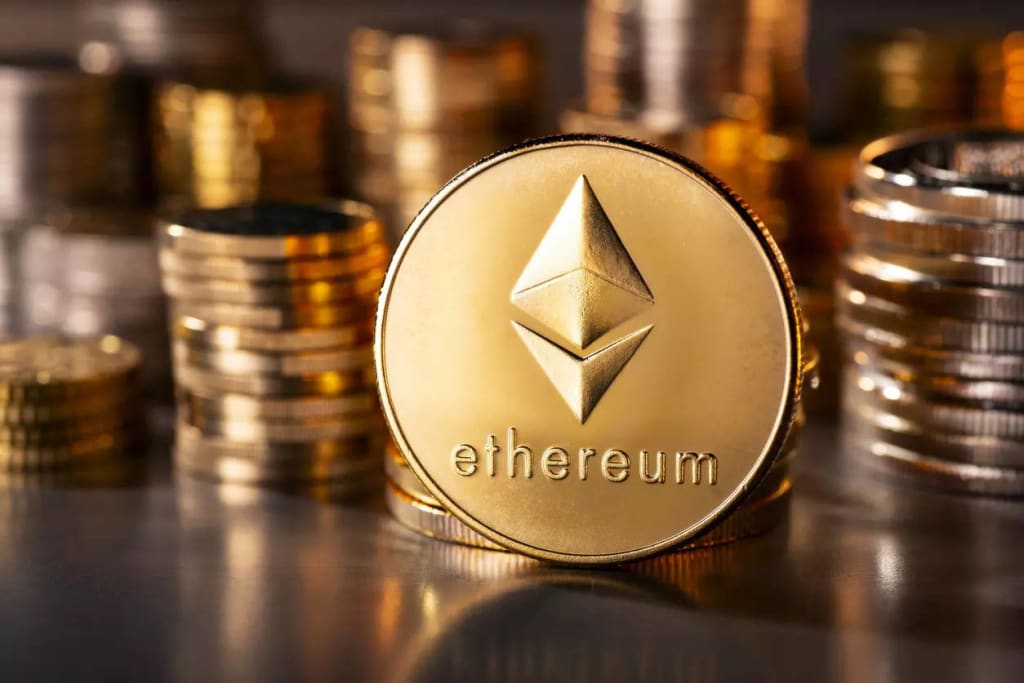
What is Ethereum?
Ethereum is a technology that's home to digital money, global payments, and applications. The community has built a booming digital economy, bold new ways for creators to earn online, and so much more. It's open to everyone, wherever you are in the world – all you need is the internet.
Among cryptocurrencies, Ether is second only to Bitcoin in market capitalization.
Ethereum History
Ethereum was conceived in 2013 by programmer Vitalik Buterin Additional founders of Ethereum included Gavin Wood, Charles Hoskinson, Anthony Di Iorio, and Joseph Lubin. In 2014, development work commenced and was crowdfunded, and the network went live on 30 July 2015. The platform allows anyone to deploy permanent and immutable decentralized applications onto it, with which users can interact. Decentralized finance (DeFi) applications provide a broad array of financial services without the need for typical financial intermediaries like brokerages, exchanges, or banks, such as allowing cryptocurrency users to borrow against their holdings or lend them out for interest. Ethereum also allows for the creation and exchange of NFTs, which are non-interchangeable tokens connected to digital works of art or other real-world items and sold as unique digital property. Additionally, many other cryptocurrencies operate as ERC-20 tokens on top of the Ethereum blockchain and have utilized the platform for initial coin offerings.
Ethereum has started implementing a series of upgrades called Ethereum 2.0, which includes a transition to proof of stake and aims to increase transaction throughput using sharding.
HOW DOES IT DIFFER FROM MINING BITCOIN?
DESPITE THE FACT THAT THE ETHEREUM BLOCKCHAIN IS BASED ON BITCOIN'S DISCOVERIES AND IDEALS, ITS CREATORS DID NOT SIMPLY DUPLICATE BITCOIN'S TECHNOLOGY BUT MADE NUMEROUS KEY CHANGES TO MAKE IT BETTER MATCH ETHEREUM'S NEEDS. THIS HAS AN EFFECT ON ETHEREUM'S MINING PROCESS AS WELL.
Ethererum was purposefully designed in a way that only allows for efficient mining with graphics processing units, or GPUs. This stands in stark contrast with Bitcoin, which nowadays is almost exclusively mined with specialized hardware, so-called ASICs. The reason for embedding such a restriction into Ethereum’s codebase was to limit the centralization of hash power as seen within the Bitcoin network. Through optimizing mining for GPUs, Ethereum developers wanted to ensure that mining would still be possible for individuals with home-owned computers and rigs even after strong network growth and an increased difficulty rate. When it comes to the distribution among miners, these measures, therefore, help to keep the network as decentralized as possible.
Unlike Bitcoin, Ethereum is an inflationary currency and the ether supply is not fixed at a maximum amount. As a result, ether’s supply growth never stops. But, inserting more money into circulation tends to lower its value. Should the amount of ether, therefore, become too great, its price could collapse. As a countermeasure, Ethereum cut its block rewards in 2017 from 5 to 3 ether. Not even 1.5 years later, in 2019, block rewards got cut once more by a third to 2 ether per block. But unlike Bitcoin, these cuts are not hardwired into Ethereum’s codebase but decided on by the Ethereum core developer team. For miners, this makes it harder to calculate future returns on their hardware investments (ROI).
What is Ethereum mining?
General overview
Mining is a way of producing blocks and verifying transactions, securing the network, and receiving rewards based on the current iteration of Ethereum’s Proof of Work consensus.
Ethereum mining requires GPUs to compete for newly minted ether from the network. The Ethash mining algorithm implemented by the Ethereum network utilizes a DAG (directed acyclic graph) file, which is a data block uploaded into the memory of the video card. This means you may have to upgrade your GPU’s memory when the DAG reaches a certain size.
WHY SHOULD YOU MINE ETHEREUM?
When the Ethereum network first launched in 2015, ether prices were low (≈1$). Mining ether, therefore, wasn’t a get-rich-quick scheme. Many of the first miners were developers or crypto enthusiasts who believed in the project and wanted to support the cause.
With an increasing ether price, mining became more lucrative, attracting tech-savvy people who understood the network’s potential and possessed enough skill to run their own nodes. Nowadays, with ether prices having surpassed 2000$, mining ether is a profitable business, even though fiercely competitive. But as Ethereum is about to switch to PoS in the near future, new investments in mining equipment are unlikely still to prove gainful.
But, for individuals having access to unused GPU processing power and wanting to dive deeper into the world of Ethereum while making some extra bucks, mining is certainly a valuable option. Nevertheless, with PoW ahead and ether staking already available, it seems just as reasonable to get into staking, which is a simpler and less hardware-intensive way to earn ether.
HOW TO MINE ETHEREUM?
When mining ether, there are three different approaches miners can follow. In the following paragraph, we take a quick look at each one.
Pool mining: Mining Ethereum in a pool is the simplest and quickest way to get started. Hereby you collaborate with other individuals. All of the miners in a single pool agree that if one of them can solve the cryptographic puzzles, rewards will be split among them according to the provided hash power. The size of the pool, measured in hash power, determines how many blocks the group finds on average and the expected rewards thereof.
However, not all pools are created equal. When choosing a pool three key characteristics should be considered: pool size, minimum payout, and pool fee.
The pool fee specifies the share the pool administration gets for running the pool. If a pool has higher fees than 3% you may consider finding another pool. Minimum payout defines the smallest amount one can withdraw from the pool. E.g. minimum payout is 1 ether, it can take weeks or months until you reach such an amount in rewards payments and are able to cash out.
Solo mining: Mining on your own seems like an attractive alternative to pool mining, as no pool fees have to be paid and rewards don’t have to be shared. But to have a realistic chance to solve one of the cryptographic puzzles in a reasonable amount of time, a miner needs dozens of GPUs. Therefore, solo mining is mostly for professional miners who run mining farms.
Cloud mining: This is the process of paying someone else to mine for you. Instead of possessing and running your own mining hardware, you rent someone else’s computing power and let them do the work for you. In return for the rent, you get the mining rewards. But be aware: cloud mining requires trust in the counterparty, especially when done over an online service. There is no guarantee that the money paid upfront is actually used to run mining equipment or that there even exists such equipment. Therefore, it is recommended to do cloud mining through long-established, trustworthy cloud mining platforms such as hashflare.
UNDERSTAND THE FUTURE OF EVERYTHING
There is a digital revolution that is shaping your future and the future of money itself.
The money in your pocket is worth less every day… so it is time to stake your claim in the future of the financial system and participate in the wealth-creation opportunity of a generation.
[Source: Wikipedia, Ethereum.org, REALVISION.COM, f2pool.io, latest.indiablogger.in, ethereumprice.org]
About the Creator
Mahedi Hasan
A free spirit with a passion for content writing.
Enjoyed the story? Support the Creator.
Subscribe for free to receive all their stories in your feed. You could also pledge your support or give them a one-off tip, letting them know you appreciate their work.






Comments
There are no comments for this story
Be the first to respond and start the conversation.